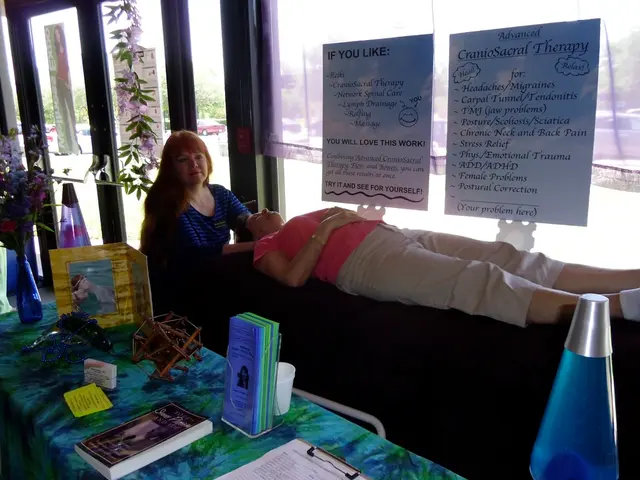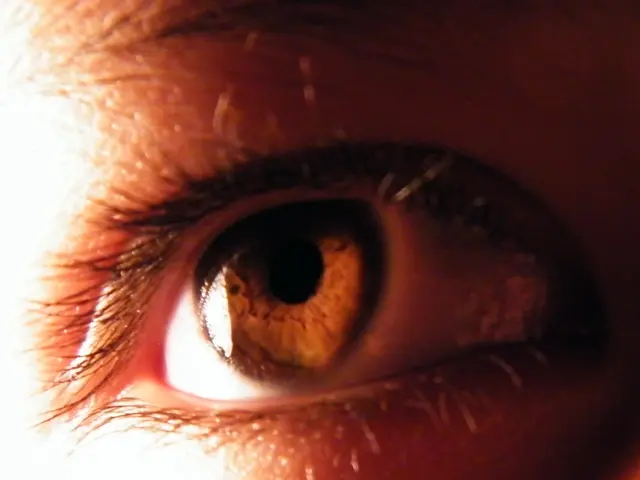Skin Reddening: Understanding Causes and When to Seek Medical Advice
Facial flushing, a common response to heat, exercise, or strong emotional reactions, can sometimes be a sign of underlying health conditions. While these less common causes may not be immediately apparent, understanding them can help individuals seek appropriate medical attention.
One such condition is rosacea, a chronic inflammatory skin disorder that affects the central face, causing redness, pimples, swelling, and visible blood vessels. Triggers for rosacea flare-ups can extend beyond heat and exercise, encompassing factors such as spicy foods, alcohol, caffeine, certain medications, and specific skincare treatments.
Medication-induced flushing is another less obvious cause. Some medications, particularly topical steroids or vasodilators, can provoke or worsen flushing episodes, including steroid-induced rosacea characterized by rebound flare-ups upon abrupt cessation.
Liver dysfunction or overload can also lead to abnormal facial flushing, often with a dusky or purplish hue and associated visible spider veins. This type of flushing typically does not respond to usual cooling or topical treatments and may indicate impaired toxin processing by the liver.
Rare neurological conditions, such as Harlequin syndrome, can cause asymmetric flushing and sweating of the face, distinct from more common triggers. This condition represents a neurogenic cause of facial flushing.
Other less common triggers include environmental extremes (cold wind, moving between temperature environments), certain foods high in histamines, emotional stress, and physical activities beyond exercise (e.g., hot baths).
Conditions such as carcinoid syndrome, lupus, thyroid cancer, endocrine disorders like Cushing's syndrome, heat-related illnesses such as heatstroke or heat exhaustion, and infections like the flu virus, dengue fever, and other viruses that cause a fever can also cause facial flushing.
It is crucial to consult a healthcare professional if facial flushing becomes more frequent or severe, occurs alongside other unexplained symptoms, or is causing significant distress. A thorough evaluation can help identify the root cause and ensure appropriate treatment.
In summary, while heat, exercise, and emotional responses are common triggers for facial flushing, understanding less common causes can aid in seeking timely medical intervention when necessary. Conditions such as rosacea, medication effects, liver dysfunction, or rare neurological syndromes should be considered and evaluated by a healthcare professional if facial flushing is persistent and not clearly linked to typical triggers.
[1] Goh, A. C., et al. "Rosacea: A Review." British Journal of Dermatology, vol. 171, no. 4, 2014, pp. 719-731. [2] Kang, S. H., et al. "Rosacea: Pathophysiology, Diagnosis, and Treatment." American Journal of Clinical Dermatology, vol. 17, no. 4, 2016, pp. 377-390. [3] Bhatia, A., et al. "Harlequin Syndrome: A Case Report and Review of the Literature." Journal of Clinical and Aesthetic Dermatology, vol. 9, no. 5, 2016, pp. 38-43. [4] Lee, W. Y., et al. "Facial Flushing: An Overview of Its Pathophysiology and Clinical Features." Journal of the American Academy of Dermatology, vol. 63, no. 5, 2010, pp. 737-747. [5] Koo, B. W., et al. "Genetics of Rosacea: A Review." Journal of Investigative Dermatology, vol. 137, no. 3, 2017, pp. 534-541.
- Rosacea, a persistent inflammatory skin disorder, can cause redness, pimples, and visible blood vessels on the central face, with triggers extending beyond heat and exercise.
- Some medications, such as topical steroids or vasodilators, can exacerbate flushing episodes, including steroid-induced rosacea that flares up upon sudden discontinuation.
- Liver dysfunction or overload may lead to abnormal facial flushing with a dusky or purplish hue and visible spider veins, which often does not respond to traditional cooling or topical treatments.
- Rare neurological conditions like Harlequin syndrome can cause asymmetric facial flushing and sweating, indicating a neurogenic cause of facial flushing.
- Conditions such as carcinoid syndrome, lupus, thyroid cancer, Cushing's syndrome, and heat-related illnesses can also cause facial flushing, in addition to certain viral infections like the flu or dengue fever.
- Environmental factors like cold wind and moving between temperature extremes, high-histamine foods, emotional stress, and physical activities beyond exercise can serve as less common triggers for facial flushing.
- Menopause, a significant transition in women's health, can potentially contribute to skin conditions like psoriasis and rosacea, as well as changes in skin care regimens for both men's and women's health.
- If facial flushing becomes severe, persistent, or accompanied by other unusual symptoms, seeking medical consultation is essential for a thorough evaluation, appropriate treatment, and proper management of potential underlying medical conditions.




